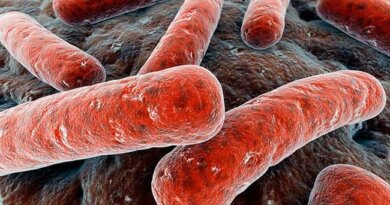7 wild facts about the spotted lanternfly : NPR
Spotted Lanternflies are an invasive species of bug now in 14 states. NPR’s Life Kit has tips on how you can help stop their spread.
SCOTT DETROW, HOST:
Don’t be fooled by the beauty of the spotted lanternfly. They are quite striking. Their wings are red, white, black and brown, and, of course, they’re covered in spots. But in the 14 states they’re currently found in, they are an invasive species. They can damage crops and trees and leave sticky stuff everywhere. Marielle Segarra, the host of NPR’s Life Kit, has more on what we can do to help keep these agents of chaos under control.
MARIELLE SEGARRA, BYLINE: The spotted lanternfly is from Southeast Asia. And in Southeast Asia, it is not at the top of the food chain. Sammy Ramsey is an entomology professor at the University of Colorado Boulder.
SAMMY RAMSEY: In most ecosystems, insects like this have a specialist predator that is dedicated to going after this organism and is really, really good at it. And that keeps an organism’s populations low.
SEGARRA: But here in the U.S., spotted lanternflies do not have specialized predators, so they just keep making bug love and multiplying and causing problems – for instance, at vineyards. These guys have never met a grape they didn’t like.
RAMSEY: So when they attach themselves to grapes, they can taint the taste of wine itself by changing the sugar and water content. In addition to that, they go after apples. They go after some ornamental plants.
SEGARRA: They can also do damage to young trees and saplings. And here’s a gross thing. Recently, I walked out of my house, and something sticky dripped on my head. And then later my neighbor says to me, have you noticed all these drops all over the sidewalk? Then we figured out that it was bug goo the lanternflies had left on top of the leaves. And guess what it is?
RAMSEY: It is the excrement of the spotted lanternfly. They feed on fluids that are almost exclusively sugar. And so when they are excreting, it is a huge volume of sugar in fluid that they are flicking out of their back end.
SEGARRA: Yeah, it’s nasty. And there are fungi that develop on top of this goo, which makes it harder for the leaves to carry out photosynthesis.
RAMSEY: It can make plants less productive because they’re getting less food.
SEGARRA: So what to do?
RAMSEY: This is the part where I tell you to choose violence, and I don’t want to do that. I really don’t want to do that, but I need to tell you to squish them.
SEGARRA: That said, if you’ve ever tried to stomp on one of these beautiful menaces, you will know that they are jumpers. So another approach is to use sticky bands, glue traps that wrap around the trees and catch the lanternflies.
RAMSEY: They get stuck to these bands. They can’t extricate themselves from it, and as a result, they starve there and die.
SEGARRA: Unfortunately, Ramsey says, the bands can also trap other creatures, which we don’t want. Some people build wire cages around them to make that less likely. He says we also need to go after lanternfly eggs. If you live in a hotspot, you’ll start to see these egg masses on the trees, and each one has about 50 eggs in it. The egg masses can be white or gray or tan or even match with the bark. We’ve heard people say they look like old chewing gum.
RAMSEY: The egg masses are the most vulnerable stage in their life cycle and also the easiest stage for you to just kind of grab and toss it into a plastic bag and never have to worry about it again.
SEGARRA: You’ll have to do a little scraping to get them off and then put them in a sealable bag with rubbing alcohol or hand sanitizer to kill them and throw them in the trash. You don’t have to worry about your own health when you’re doing this. The lanternflies are not poisonous, and they don’t bite – but if you want to wear gloves, by all means. Also, if you see a spotted lanternfly in a place where they’re not already known to exist, take a picture and send it to your state department of agriculture.
For NPR News, I’m Marielle Segarra.
(SOUNDBITE OF EMANCIPATOR’S “MERLION”)
DETROW: For more life tips and hacks, go to npr.org/lifekit.
(SOUNDBITE OF EMANCIPATOR’S “MERLION”)
Copyright © 2023 NPR. All rights reserved. Visit our website terms of use and permissions pages at www.npr.org for further information.
NPR transcripts are created on a rush deadline by an NPR contractor. This text may not be in its final form and may be updated or revised in the future. Accuracy and availability may vary. The authoritative record of NPR’s programming is the audio record.





